How did the wealth of the Spanish world get to Madrid to fill the new palace of Carlos III?
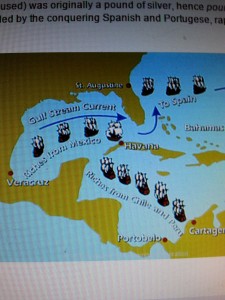 We’ve discussed Mexico City’s palaces during the 1770s and the Manila Galleons. Hopefully, everyone has heard of the Spanish silver fleets. After gathering silver and gold from Peru and Mexico, the shipments were collected at Havana. Twice a year, Spring and Fall, the massive, heavily protected fleets sailed out of Havana harbor to carry the treasure to Spain. All too often the fleets were caught by pirates, hurricanes or bad weather as the Gulf Stream current swept them north along the Florida coast, then east across the Atlantic following the trade winds back to Cadiz or Seville.
We’ve discussed Mexico City’s palaces during the 1770s and the Manila Galleons. Hopefully, everyone has heard of the Spanish silver fleets. After gathering silver and gold from Peru and Mexico, the shipments were collected at Havana. Twice a year, Spring and Fall, the massive, heavily protected fleets sailed out of Havana harbor to carry the treasure to Spain. All too often the fleets were caught by pirates, hurricanes or bad weather as the Gulf Stream current swept them north along the Florida coast, then east across the Atlantic following the trade winds back to Cadiz or Seville.
Everyone from kings to commoners depended on those yearly shipments. Kings borrowed heavily against their arrival to pay for their constant wars. Dutch money lenders counted on the fleet to get repaid for their loans to the Spanish kings. The English (if they hadn’t already captured the ships) counted on the Dutch to get repaid, so the Dutch could buy merchandise from the rapidly industrializing English factories, to then sell the goods, in turn, to the Spanish. Ironic though it is, Spanish silver fueled the Industrial Revolution of their hated rivals, the British.
Archivists at the Archivo de Indias in Sevilla always smile when they see sunburned, grizzled young Americans clad in T-shirts, shorts and sandals who stumble, wide-eyed into their quiet reading room. They know that these are not historians. They are treasure hunters searching for records of the ships from the silver fleets that went down in the Caribbean or along the Atlantic coast. Like gambling on the lottery, the discoveries are not guaranteed, but the Spanish records are available and very complete.
Marine archeologists have discovered many wrecks of the silver-laden treasure ships. Perhaps one of the better known is Mel Fisher out of Key West. My aunt Carolyn, who lived there at the time, had a chance to invest in Fisher’s hare-brained scheme. It took him ten years and the loss of his son and daughter-in-law, but he managed to scrounge up enough money to eventually find the Virgen de la Atocha.
 His discovery proved that there was a lot of chicanery going on. Spanish officials and citizens were sneaking emeralds back without paying the King’s fifth. Since gold could be brought back as jewelry without paying taxes, there were rings, pendants, pins and long, heavy necklaces of gold that were brought back by Spaniards returning from the New World on the silver fleets.
His discovery proved that there was a lot of chicanery going on. Spanish officials and citizens were sneaking emeralds back without paying the King’s fifth. Since gold could be brought back as jewelry without paying taxes, there were rings, pendants, pins and long, heavy necklaces of gold that were brought back by Spaniards returning from the New World on the silver fleets.
I wondered what it must have been like for those standing in Havana harbor watching the amazing sight of the gathering of the silver fleet for its semi-annual trip to Spain. In 1772, Don José de Gálvez, along with his nephew, Bernardo, and Teodoro de Croix all sailed back on the winter silver fleet. Is it possible this is what they saw?
From The Spanish Captain’s Daughter: “The excitement had been thick in the port when two dozen great galleons, loaded to groaning with gold, silver, emeralds, spices and cochineal from the New World, fired their guns in a final thunderous salute. Anchor chains clanked and rattled as the sailors turned the capstans and drew the broad curving iron arms from the bottom of the bay, dripping mud and seaweed from their heart-shaped flukes.
“The bos’n’s mates’ whistles squealed across the rippling water of the harbor, sending sailors scrambling into the rigging to loose the heavy canvas sails that dropped open and cracked full as they caught the southeasterly winds. The giant ships lumbered into motion, each turning ponderously, one behind the other, amazing in their precision as they gathered speed and tacked out to join the line of frigate escorts awaiting them in the roadstead beyond the protective arms of Havana’s harbor.
“Standing on the dock, well-dressed merchants, anxious about their cargos, stood next to sweat-stained dockhands, grateful for the brief respite from their never-ending toil. Government officials, thankful that the ships were no longer their problem, consigned the treasure to God and to the waves and to the English brigands always ready to pounce. The prostitutes and doxies already sought new customers among the willing soldiers and sailors, and the townsfolk sighed and turned homeward, at once awed by the might of Spain and irritated at the burdens of empire.”
Non-fiction just doesn’t provide the images that imagination—and novels–do, as long as it is, hopefully, accurate.

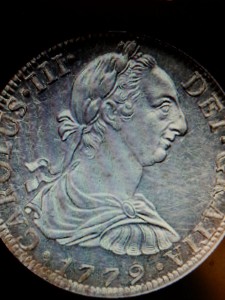
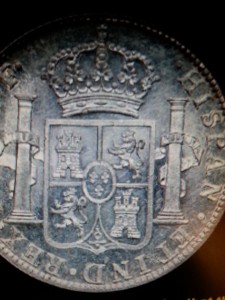
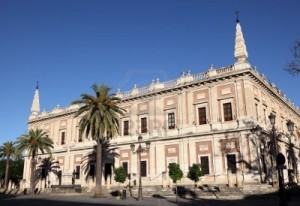
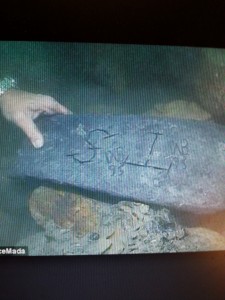
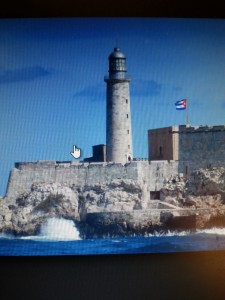
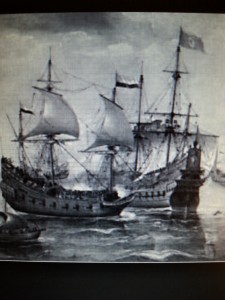
… [Trackback]
[…] Info to that Topic: carolinacastillocrimm.com/tidbits-from-history-the-spanish-silver-fleets/ […]
… [Trackback]
[…] Read More on that Topic: carolinacastillocrimm.com/tidbits-from-history-the-spanish-silver-fleets/ […]
… [Trackback]
[…] Read More here on that Topic: carolinacastillocrimm.com/tidbits-from-history-the-spanish-silver-fleets/ […]
… [Trackback]
[…] Here you can find 1469 more Info to that Topic: carolinacastillocrimm.com/tidbits-from-history-the-spanish-silver-fleets/ […]
… [Trackback]
[…] Information to that Topic: carolinacastillocrimm.com/tidbits-from-history-the-spanish-silver-fleets/ […]
… [Trackback]
[…] Info to that Topic: carolinacastillocrimm.com/tidbits-from-history-the-spanish-silver-fleets/ […]
… [Trackback]
[…] There you can find 17643 additional Information to that Topic: carolinacastillocrimm.com/tidbits-from-history-the-spanish-silver-fleets/ […]
… [Trackback]
[…] Read More Info here on that Topic: carolinacastillocrimm.com/tidbits-from-history-the-spanish-silver-fleets/ […]
… [Trackback]
[…] Find More Information here to that Topic: carolinacastillocrimm.com/tidbits-from-history-the-spanish-silver-fleets/ […]
… [Trackback]
[…] Info on that Topic: carolinacastillocrimm.com/tidbits-from-history-the-spanish-silver-fleets/ […]
… [Trackback]
[…] Find More on on that Topic: carolinacastillocrimm.com/tidbits-from-history-the-spanish-silver-fleets/ […]
… [Trackback]
[…] Here you will find 17920 additional Information on that Topic: carolinacastillocrimm.com/tidbits-from-history-the-spanish-silver-fleets/ […]
… [Trackback]
[…] Here you can find 34541 additional Info on that Topic: carolinacastillocrimm.com/tidbits-from-history-the-spanish-silver-fleets/ […]
… [Trackback]
[…] Find More on to that Topic: carolinacastillocrimm.com/tidbits-from-history-the-spanish-silver-fleets/ […]
… [Trackback]
[…] Info to that Topic: carolinacastillocrimm.com/tidbits-from-history-the-spanish-silver-fleets/ […]
… [Trackback]
[…] Info on that Topic: carolinacastillocrimm.com/tidbits-from-history-the-spanish-silver-fleets/ […]
… [Trackback]
[…] Read More here to that Topic: carolinacastillocrimm.com/tidbits-from-history-the-spanish-silver-fleets/ […]
… [Trackback]
[…] Read More on on that Topic: carolinacastillocrimm.com/tidbits-from-history-the-spanish-silver-fleets/ […]
… [Trackback]
[…] Find More here on that Topic: carolinacastillocrimm.com/tidbits-from-history-the-spanish-silver-fleets/ […]
… [Trackback]
[…] Information to that Topic: carolinacastillocrimm.com/tidbits-from-history-the-spanish-silver-fleets/ […]
… [Trackback]
[…] Here you will find 2223 additional Info on that Topic: carolinacastillocrimm.com/tidbits-from-history-the-spanish-silver-fleets/ […]
… [Trackback]
[…] There you will find 85504 additional Information to that Topic: carolinacastillocrimm.com/tidbits-from-history-the-spanish-silver-fleets/ […]
… [Trackback]
[…] Read More Information here to that Topic: carolinacastillocrimm.com/tidbits-from-history-the-spanish-silver-fleets/ […]
… [Trackback]
[…] Read More on to that Topic: carolinacastillocrimm.com/tidbits-from-history-the-spanish-silver-fleets/ […]
… [Trackback]
[…] Read More on that Topic: carolinacastillocrimm.com/tidbits-from-history-the-spanish-silver-fleets/ […]
… [Trackback]
[…] Here you will find 59876 more Information to that Topic: carolinacastillocrimm.com/tidbits-from-history-the-spanish-silver-fleets/ […]
… [Trackback]
[…] Here you can find 63382 additional Info to that Topic: carolinacastillocrimm.com/tidbits-from-history-the-spanish-silver-fleets/ […]
… [Trackback]
[…] Read More here on that Topic: carolinacastillocrimm.com/tidbits-from-history-the-spanish-silver-fleets/ […]